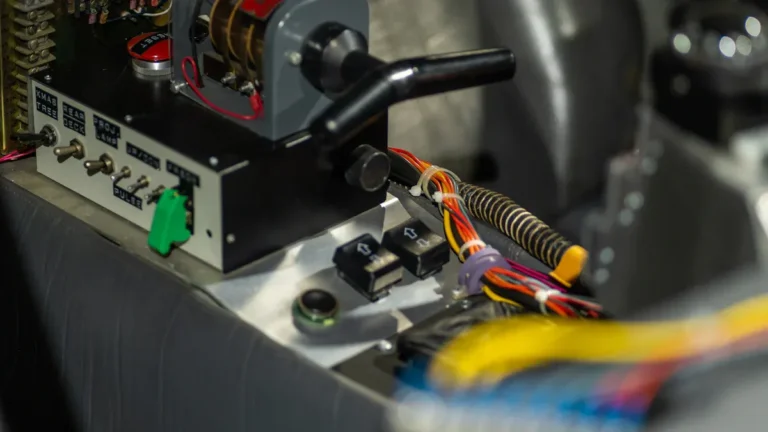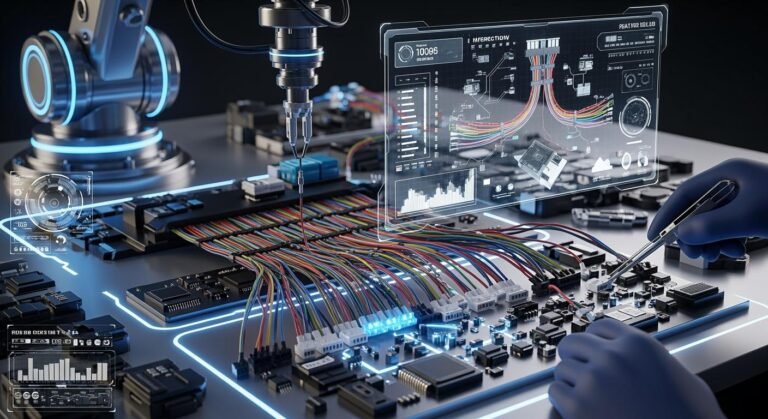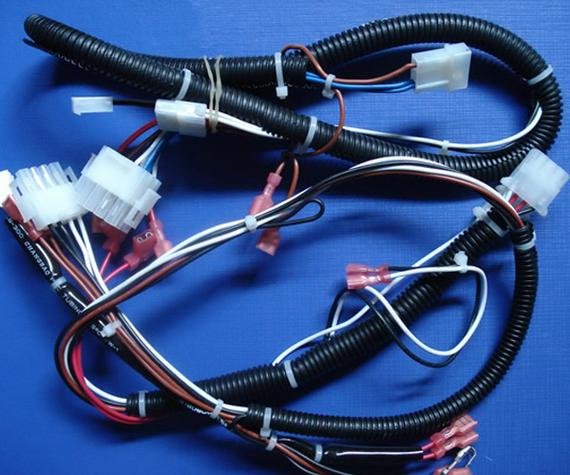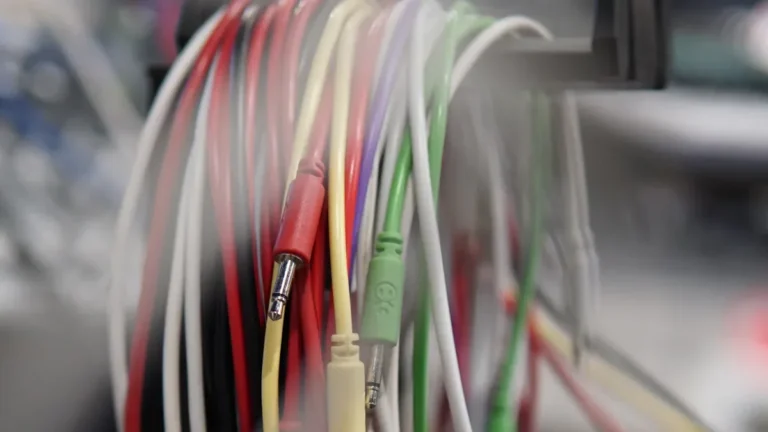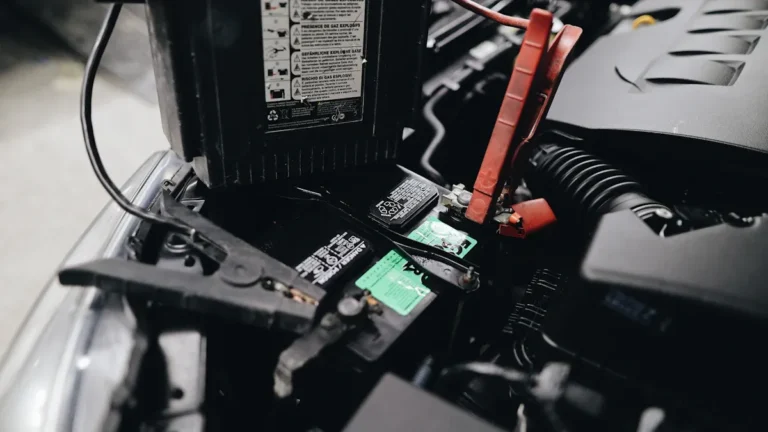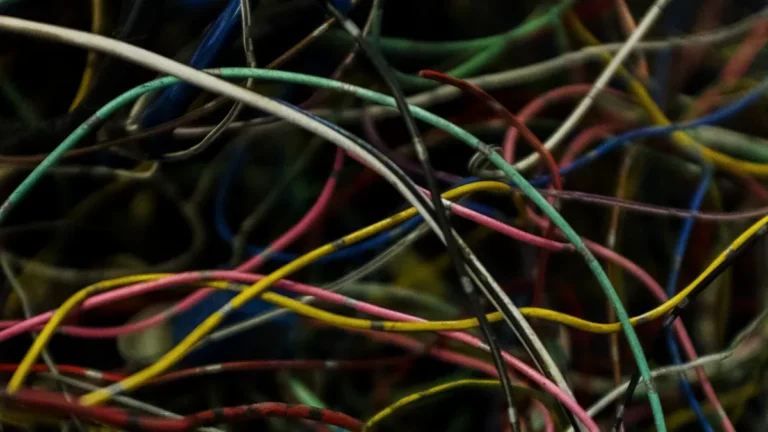What Is an Engine Wiring Harness and How Does It Work

An engine wiring harness is a bundle of wires and connectors that links the electrical parts of a car’s engine. This harness delivers power and signals to essential components, helping the engine run smoothly and safely. When car owners understand how the engine wiring harness works, they can spot problems early. Regular inspection and simple protective steps, like covering exposed wires, help reduce repair costs and prevent expensive electrical failures.
Key Takeaways
An engine wiring harness bundles wires that deliver power and signals to engine parts, helping the engine run smoothly and safely.
The harness protects wires from heat, moisture, and damage, reducing electrical problems and making repairs easier.
It connects important engine components and sensors, allowing the engine control unit to manage the engine in real time.
Common problems include dimming lights, engine stalling, and visible wire damage; early checks can prevent costly repairs.
Regular inspection, cleaning, and protecting connectors help extend the harness’s life and keep the vehicle reliable.
Engine Wiring Harness Basics

What It Is
An engine wiring harness is a group of wires, connectors, and protective coverings that link the electrical parts of a car’s engine. Each wire in the harness has a special job. Some wires carry electrical power from the battery to important engine parts like the alternator, ignition coils, and spark plugs. Other wires send signals between the engine control unit (ECU), sensors, and actuators. These signals help the engine work well and respond to changes.
The harness keeps all the wires together in one bundle. This design makes it easier to install and repair. Color coding on the wires helps mechanics find and fix problems quickly. The harness uses strong materials that can handle heat, vibration, and chemicals found in the engine bay. Modern vehicles need more wires because they have more sensors and electronic systems. The engine wiring harness has become more complex to support these new features.
Tip: Color-coded wires help prevent mistakes during repairs and make troubleshooting faster.
Why It Matters
A well-designed engine wiring harness keeps a vehicle safe and reliable. It organizes and protects the wires, which lowers the risk of short circuits and electrical fires. The harness uses heat-resistant and chemical-resistant materials to last a long time, even in tough conditions. Most harnesses can last as long as the vehicle itself if made with care and used under normal conditions.
Key reasons the engine wiring harness matters:
It ensures smooth power and signal flow to engine parts, which helps the engine run efficiently.
It protects wires from damage, reducing the chance of electrical problems.
It supports new technologies like advanced driver assistance systems and electric vehicle features.
It makes repairs and upgrades easier by keeping wires neat and easy to reach.
Over the past decade, harness designs have improved. New materials make them lighter and stronger. Connectors now support faster data speeds for modern safety and infotainment systems. Some harnesses even include sensors that help detect problems early. These changes help vehicles stay safe, efficient, and ready for future upgrades.
Key Components
Wires and Cables
Wires and cables form the backbone of every engine wiring harness. They carry electrical power and signals between the engine’s main parts. Manufacturers use different materials for insulation and protection. Each material offers unique benefits for durability and safety.
Material Type | Advantages |
|---|---|
Durable, widely used insulator material | |
SR-PVC (Semi-rigid PVC) | Provides rigidity and durability |
Cellular Polyethylene | Water-resistant, protects against moisture damage |
EPDM | Good resistance to heat and weathering |
Thermoplastic Elastomers | Flexible, good abrasion resistance |
Polyethylene (PE) | Water-resistant, durable insulation |
Polyurethane and Nylon Blends | Abrasion protection, durable in harsh conditions |
Fluoropolymers | High temperature resistance, chemical resistance, good electrical insulation |
Cross-linked Polyethylene | Enhanced thermal and mechanical properties |
Vinyl | General purpose insulation |
These materials help wires handle high currents and resist heat, moisture, and abrasion. Bundling wires together reduces the risk of electrical shorts. This design also makes the harness safer and more reliable, even in harsh engine environments.
Note: Modern harnesses use lighter, stronger materials to improve performance and support new vehicle technologies.
Connectors and Terminals
Connectors and terminals join wires to engine parts and other systems. They play a key role in keeping electrical connections secure and reliable.
Ring terminals, spade terminals, and butt connectors fasten wires to components or other wires.
Multi-pin connectors organize many wires into a single plug, which helps with complex engine systems.
Weatherproof connectors use seals and gaskets to block out moisture and dirt.
Quick disconnects allow easy removal and replacement of parts.
Heat shrink connectors add insulation and create a tight, weather-resistant seal.
Quality connectors and terminals lower electrical resistance and prevent failures. Their design ensures that the harness works well for a long time, even when exposed to vibration, heat, or chemicals.
Protective Tubing
Protective tubing shields the wires and connectors from damage. It keeps the harness safe from heat, abrasion, and chemicals found in the engine bay.
Protective Tubing Type | Material/Composition | Key Features and Contributions to Durability and Safety |
|---|---|---|
Corrugated Tubing | Polypropylene, Polyethylene, Nylon | Flexible, flame resistant, protects against vibration and abrasion, high melting point |
Heat Shrinkable Tubing | Polyolefin | Shrinks tightly, seals against dust and water, flame and weather resistant |
Fiberglass Sleeving | Fiberglass | Withstands high temperatures, flame retardant, flexible |
Extruded PVC Tubing | PVC | Cost-effective, resists voltage, weather, and gasoline, flexible |
Expandable Braided Sleeving | PET | Flexible, heat dissipation, flame and chemical resistant |
Self-wrapping Woven Sleeving | Polyester monofilaments/multifilaments | Flame and abrasion resistant, easy to install, fits irregular shapes |
Protective tubing helps the harness last longer and keeps the vehicle safe. It meets strict fire and safety standards, making sure the harness can handle the tough conditions inside an engine compartment.
How Engine Wiring Harness Works
Power Transmission
The engine wiring harness bundles many wires together. This organized design helps technicians install the harness quickly and reduces mistakes. Manufacturers use tape, sleeving, ties, and clips to keep wires in neat groups. Protective coverings shield the wires from heat, fluids, and vibration. Cable ties and clips hold the wires in place, which prevents wear and lowers the risk of short circuits. Routing hardware, such as conduits and grommets, protects wires where they pass through panels. Labels and testing help ensure each wire goes to the right place. Pre-configured harness assemblies can cut installation time from minutes to seconds.
Tip: A well-bundled harness makes repairs and upgrades easier for mechanics.
Signal Communication
The engine wiring harness acts like the nervous system of the vehicle. It transmits electrical signals and power between the engine control unit (ECU) and sensors. The harness carries important data, such as engine temperature, oxygen levels, and air-fuel ratio, to the ECU. This information allows the ECU to manage the engine in real time. Shielded and twisted pair wires protect these signals from electromagnetic interference. Connectors and terminals provide secure electrical contacts, which keep the signals accurate. The harness routes wires away from heat and vibration, so communication stays reliable.
The harness sends sensor data to the ECU for real-time decisions.
Shielded wires prevent signal loss and interference.
Secure connectors keep the system stable and safe.
Connections to Engine Parts
The engine wiring harness connects many key engine parts. These include the engine controller, oil controller gate, transmission plug housing, air pipe sensors, pressure sensors, and water temperature sensors. Each connection relays electrical power and control signals to the right component. This setup allows the engine to run smoothly and respond to changes. The harness protects wires from moisture, abrasion, and vibration, which reduces electrical problems. Reliable connections help the engine perform well and prevent failures.
The harness links the ECU, sensors, relays, fuse box, and actuators.
It supports precise control and monitoring of engine functions.
Consistent wiring design helps the engine meet high-performance demands.
Note: A strong and well-designed harness keeps the engine safe, efficient, and ready for future upgrades.
Common Issues and Care
Signs of Failure
Engine wiring harness problems often show clear warning signs. Automotive repair professionals report several symptoms that help identify harness failure early.
Dimming or flickering lights, including headlights, brake lights, and tail lights
Difficulty starting the engine, with stuttering or lurching while driving
Rapid battery discharge or unreliable battery performance
Activation of the Check Engine light, sometimes with other dashboard warnings
Visible damage such as frayed or exposed wires
Loose or corroded connectors
Engine misfires or failure to start
Technicians use visual inspections, continuity tests, and OBD-II scanners to confirm these issues. Early detection helps prevent more serious electrical failures.
Causes of Problems
Many factors contribute to engine wiring harness problems. Moisture and corrosion are leading causes, especially in humid or rainy climates. Physical damage, such as cracked or frayed wires, often results from vibration or poor installation.
Heat from the engine breaks down insulation and weakens wires
Dust and dirt accelerate corrosion by trapping moisture
Incorrect wire gauge selection causes power surges or resistance
Poor-quality connectors and improper repairs increase failure risk
Adding new wires to an old harness can overload the system
Environmental factors like heat and moisture cause different types of corrosion, including galvanic and crevice corrosion. Fretting corrosion occurs when connectors wear down from vibration.
Maintenance Tips
Automotive experts recommend several steps to extend the lifespan of an engine wiring harness:
Inspect connectors regularly for damage, corrosion, or loose parts
Clean connectors with electrical contact cleaner and a soft brush
Apply dielectric grease to prevent moisture and corrosion
Use weatherproof covers and seals for connectors exposed to harsh conditions
Handle connectors gently; avoid pulling wires or forcing connections
Replace damaged connectors with ones that match the original type and wire size
Use heat shrink tubing or electrical tape to insulate and protect connections
Test connectors with a multimeter to check for continuity and weak connections
Address problems promptly by tightening loose connectors and cleaning corrosion
Tip: Regular inspection and careful handling help maintain reliable electrical connections and prevent costly repairs.
The engine wiring harness keeps a vehicle’s engine running safely and smoothly. Regular inspection and timely maintenance help prevent major breakdowns.
Visual checks during routine service spot early damage like abrasion or oil saturation.
Protective sleeves and secure wires lower the risk of physical harm.
Properly clipped harnesses avoid contact with hot or sharp parts.
Rodent deterrence and routine checks stop animal damage.
Careful handling during repairs prevents engine no-start or stalling.
For complex issues, a professional technician should handle repairs.
FAQ
What happens if an engine wiring harness fails?
A failed harness can cause engine misfires, stalling, or no-start conditions. Electrical systems may stop working. Warning lights often appear on the dashboard. Mechanics recommend immediate inspection to prevent further damage.
How much does it cost to replace an engine wiring harness?
Replacement costs range from $300 to $1,500. The price depends on the vehicle model and labor rates. Luxury or modern cars usually cost more. Mechanics suggest getting a detailed quote before repairs.
Can someone repair a damaged engine wiring harness?
Technicians can repair minor damage by splicing wires or replacing connectors. Severe damage may require a full replacement. Using proper tools and materials ensures safe and lasting repairs.
Tip: Always disconnect the battery before working on the wiring harness.
How long does an engine wiring harness last?
Most harnesses last the lifetime of the vehicle. Quality materials and regular maintenance help extend their lifespan. Exposure to heat, moisture, or rodents can shorten service life.
Factor | Effect on Lifespan |
|---|---|
Quality | Higher quality lasts longer |
Environment | Harsh conditions reduce lifespan |
Maintenance | Regular care extends life |

